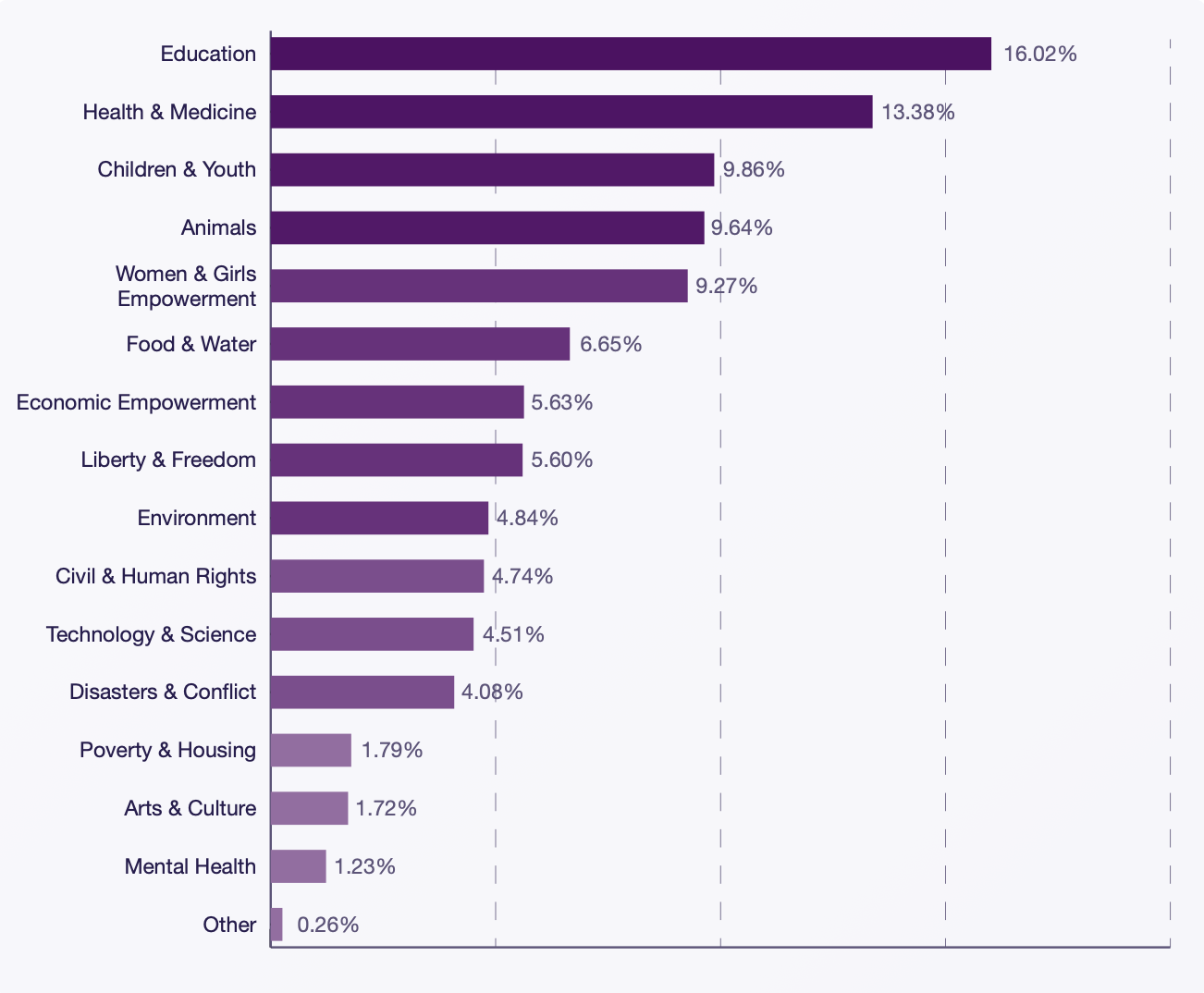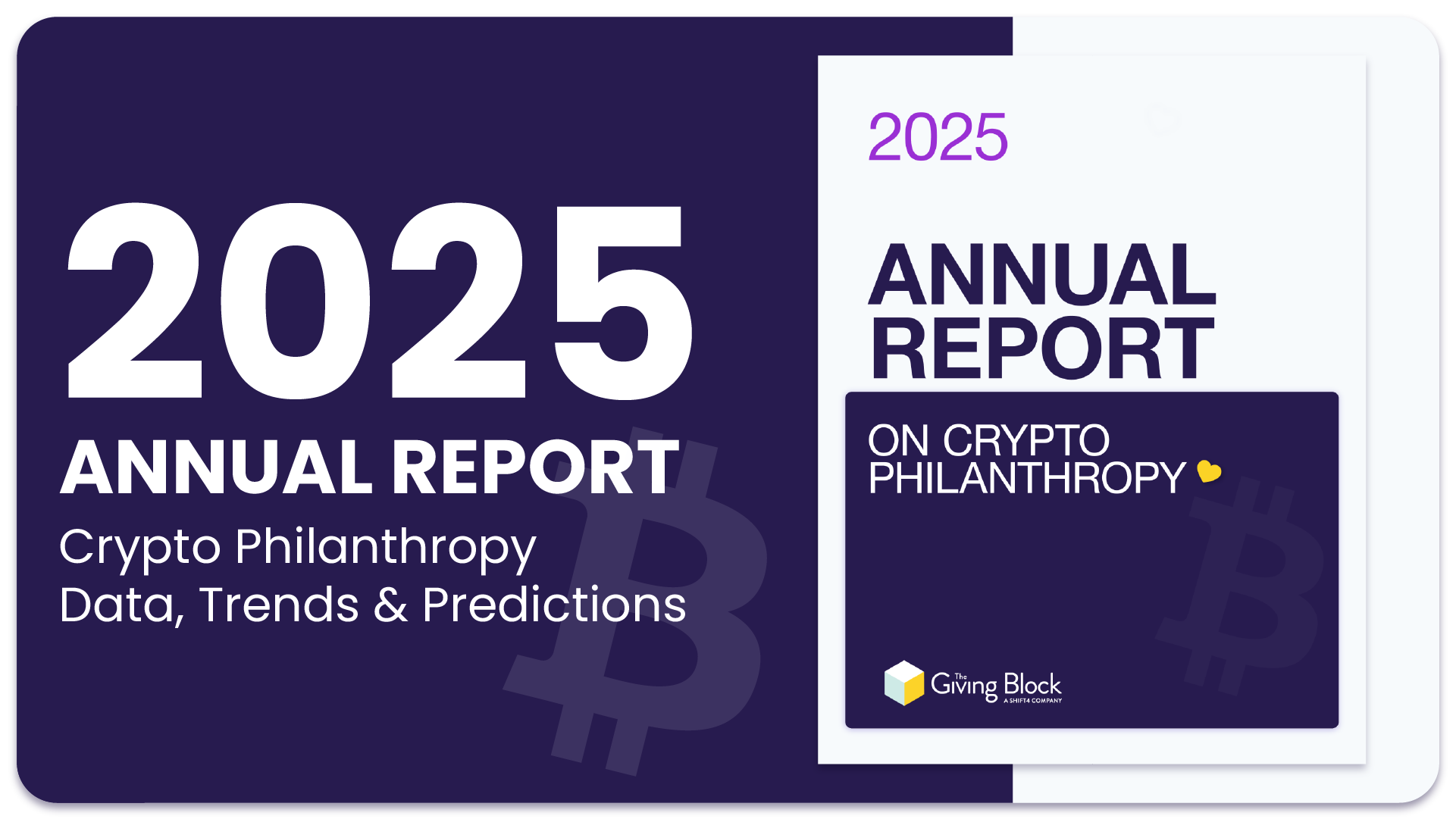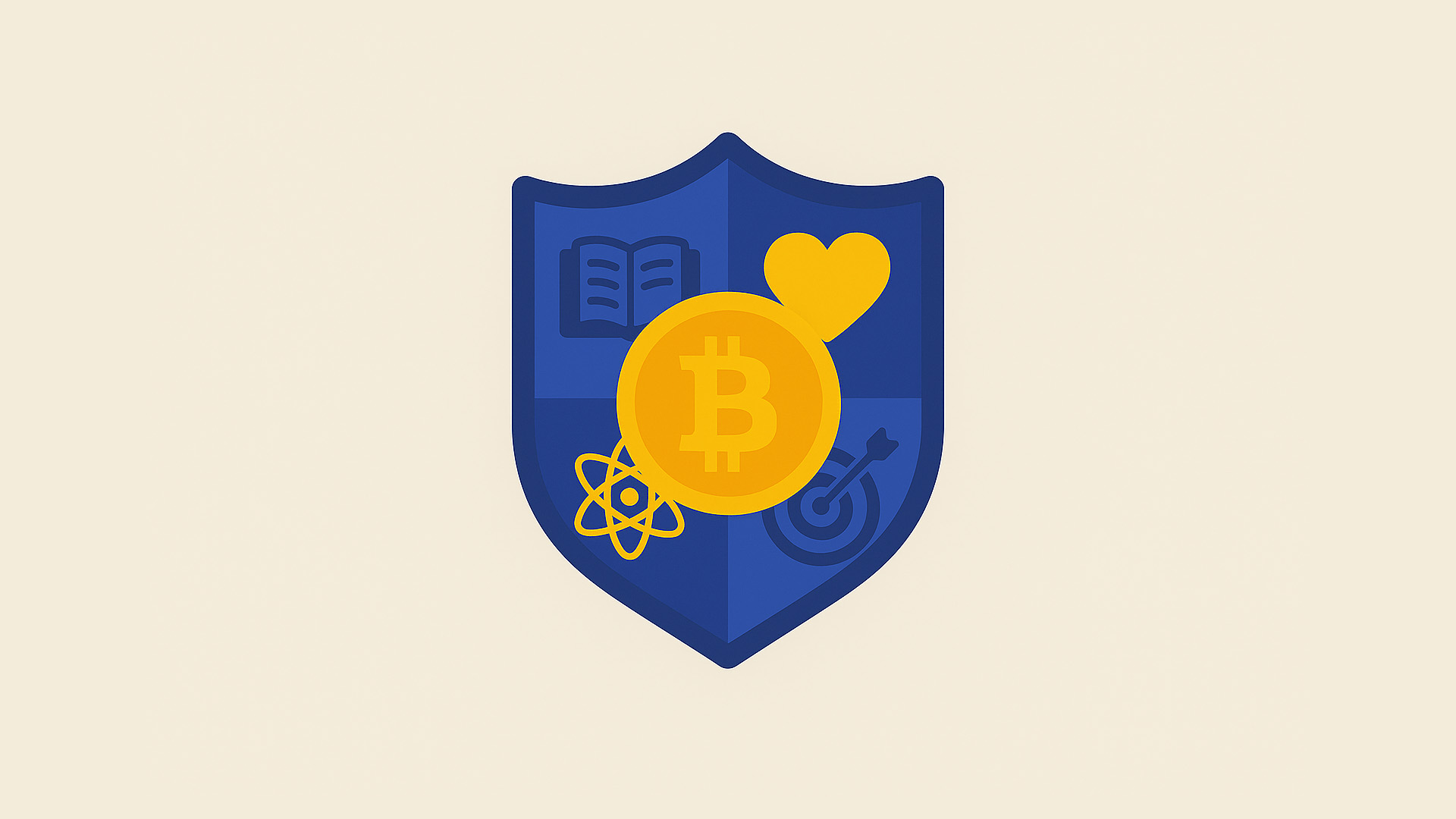Budget cuts are hitting education nonprofits hard, from after-school programs to classroom support and scholarships. As public and private funding shrinks, the need for innovative and effective fundraising strategies has never been greater.
The Funding Crisis in Education
According to the 2025 Annual Report on Crypto Philanthropy, education was the top cause area supported by crypto donors, accounting for over 16% of all crypto donations. Yet despite this generosity, many education-focused nonprofits face shrinking operational budgets, staff layoffs, and growing student needs. Inflation, rising wages, and a challenging grant landscape further compound the problem.
Education nonprofits often serve as the safety net for underserved communities. When school budgets are cut, programs like literacy tutoring, STEM enrichment, and college prep often fall to nonprofits to sustain. This rising demand creates an urgent need for adaptable, scalable, and community-driven fundraising approaches.
One standout example is Ripple’s recent $25 million pledge to support education-focused nonprofits, including a $10 million donation to Teach For America to boost innovation, tutoring, and teacher support. These major gifts underscore the increasing interest in education philanthropy, particularly among crypto-savvy donors. Read more about Ripple’s pledge and its impact on Teach For America.

Meet dozens of K-12 schools, colleges, and Universities fundraising with crypto, stocks and DAF!
The Giving Block has the largest collection of educational nonprofits and schools accepting non-cash asset donations.
Rethinking School Fundraising Ideas
Traditional bake sales and car washes won’t cut it anymore. Nonprofits must think bigger, lean into technology, and tap into new donor demographics. Below, we explore actionable school fundraising ideas to meet today’s financial realities.
1. Launch Online School Fundraising Programs
Online giving platforms make it easy for donors to contribute from anywhere. Whether it’s crowdfunding a classroom project or setting up recurring donations, digital fundraising provides flexibility and scale.
Here are some creative online school fundraising programs to consider:
Peer-to-peer fundraisers: Empower your community to fundraise on your behalf by hosting a virtual walkathon, trivia night, or talent show. Participants raise money through their personal networks. Learn more about creating peer-to-peer fundraisers.
Recurring donation campaigns: Encourage monthly giving with automated donor recognition, exclusive updates, or school merchandise.
Email and SMS automation: Use tools like Mailchimp or Givebutter to re-engage lapsed donors, promote events, and deliver donation receipts.
Nonprofits looking to future-proof their fundraising can also tap into crypto philanthropy. With platforms like The Giving Block, you can accept cryptocurrency donations securely and instantly. Learn how to start.
2. Explore Elementary School Fundraising Ideas That Engage Families
For elementary schools, community is everything. Fundraisers that involve parents, teachers, and students can build long-term support while raising critical funds.
Some elementary school fundraising ideas that spark participation:
Family giving challenges: Organize a week-long campaign with daily classroom goals and themed spirit days. Offer pizza parties or books for the top-performing class.
Student art auctions: Parents love to support their kids’ creativity. Host an online or in-person silent auction of student artwork, with proceeds supporting art supplies or music programs.
Storybook character parade: Students dress as their favorite book characters and collect pledges for each lap walked during a school-wide parade.
These ideas not only raise money but reinforce the school’s role as a community hub.
3. Host Hybrid and In-Person Events for Broader Reach
While online campaigns are essential, don’t overlook the power of hybrid or in-person events. Community gatherings are a cornerstone of school spirit and fundraising.
Consider:
Back-to-school carnivals: Include ticketed games, face painting, food trucks, and student performances.
Parent-teacher talent shows: Encourage faculty and families to showcase their skills with donations as votes.
Virtual auctions and raffles: Allow families who can’t attend in person to participate and bid from home.
Be sure to include QR codes, live donation thermometers, and crypto donation options at all events.
4. Partner With Local Businesses
Businesses are often eager to support education—especially if there’s a promotional opportunity involved. Form mutually beneficial partnerships to boost fundraising and visibility.
Ideas include:
Restaurant nights: Partner with local eateries to donate a percentage of sales on a designated day.
Sponsored school supplies: Allow businesses to brand donation bins, raffle items, or newsletters in exchange for contributions.
Corporate matching gifts: Promote employer matching opportunities and make it easy for donors to double their impact.
5. Diversify Revenue with Crypto Donations
With the average crypto donation in 2024 valued at $10,978—a 386% increase from the year prior—cryptocurrency is becoming a vital giving channel. Schools and education nonprofits can benefit by:
Accepting Bitcoin, Ethereum, and other digital assets through The Giving Block.
Highlighting tax advantages of donating appreciated crypto.
Creating year-end crypto giving campaigns timed with Crypto Giving Tuesday.
With more than 70% of the top 100 U.S. charities now accepting cryptocurrency, education organizations should not be left behind. Explore crypto fundraising for education.
6. Use Data to Steward Donors and Improve Campaigns
The most successful fundraisers are driven by data. Track donor engagement across platforms, measure ROI on fundraising events, and segment your donor base for personalized outreach.
Use tools like:
Google Analytics to monitor website traffic from campaigns.
Donor management systems like Bloomerang, Donorbox, or Salesforce.
Crypto dashboards from The Giving Block to track digital donations in real time.
Insights help you understand what works, what doesn’t, and how to refine your strategy.
The Role of Crypto in the Future of School Fundraising
The rise of crypto donors is not a fad. The 2025 Getting to Know Crypto Donors report reveals:
- Crypto donors are younger, wealthier, and more generous than traditional donors.
- 45% of crypto users give $1,000 or more annually to charity.
- Most crypto donors are motivated by a mix of tax efficiency and philanthropic impact.
With 861 million global crypto users projected by 2025, education nonprofits have a massive opportunity to tap into this donor base.
Steps to Get Started:
- Join The Giving Block
- Set up a crypto donation page.
- Announce your crypto acceptance on social media and email.
- Join campaigns like Crypto Giving Tuesday.
Moving Forward Despite Budget Cuts
Education nonprofits must embrace modern fundraising tactics to weather economic uncertainty. From launching online campaigns to accepting crypto, these strategies not only fill budget gaps but future-proof your fundraising.
Today’s most successful organizations are those willing to innovate, test new ideas, and reach donors where they are—online, on mobile, and increasingly, on the blockchain.
Ready to launch a crypto-powered school fundraiser?
Explore The Giving Block’s education nonprofit solutions.



















